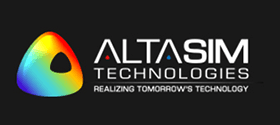Ask a medical device engineer if their product is FDA “approved,” and you might see them twitch. That’s because, in FDA-land, ‘approved’ and ‘cleared’ aren’t synonymous. They’re different regulatory universes. Mix them up in a submission or investor meeting, and you’re not just in for some awkward course corrections, but also potential delays and misunderstandings that could impact your project.
So what’s the difference? And more importantly, how do development teams navigate these waters while maximizing safety, speed, and strategy? It starts with understanding what the FDA means, and partnering with a firm that understands how to design your development process accordingly.
Clear vs. Approved: The Basics
FDA Clearance (via 510(k)) applies to Class II devices that are “substantially equivalent” to an already legally marketed product. In this pathway, you’re not breaking new scientific ground. You’re demonstrating that your device is just as safe and effective as one that’s already on the market.
FDA Approval (via PMA – Premarket Approval) is the heavyweight route, typically reserved for Class III devices such as implantables, life-supporting technologies, or other high-risk innovations. Here, you must provide comprehensive clinical data to prove safety and effectiveness, not just equivalence.
Pro Tip: If you refer to your 510(k) device as “approved,” be prepared for the FDA to respond with more than a raised eyebrow. They will possibly make a formal objection.
Why the Difference Matters
- Timelines Vary Widely
510(k) clearance might take a few months. PMA approval? Think years. - Data Requirements Differ
Clearance leans heavily on predicate devices and performance testing. Approval demands clinical trials and volumes of in vitro/in vivo data.
- Innovation Pathways Change
If you’re designing something novel with no clear predicate device, you’re likely heading toward PMA (or De Novo, in some cases).
How Simulation Helps—No Matter the Path
Whether you’re pursuing clearance or approval, AltaSim Technologies has proven repeatedly that COMSOL Multiphysics simulation provides a strategic advantage at every stage. For 510(k) clearance, it provides hard data to support equivalence claims, demonstrating that your device performs as well as, or better than, the predicate. For PMA approval, in silico results can supplement clinical and bench testing, predict device behavior under various conditions, and minimize unwelcome surprises during formal trials. For both pathways, simulation helps identify and resolve potential issues early, well before they appear in regulatory reviews or impact patient outcomes, saving companies time and money.
How Companies Can Best Leverage Medical Device Development Tools
To maximize the benefits of medical device development tools, AltaSim Technologies will initiate our partnership with you by establishing a well-defined regulatory roadmap. Understanding whether you’re aiming for clearance or approval shapes every decision from timelines and documentation to testing strategies. AltaSim Technologies will ensure that simulation plays a central role in building a strong evidence portfolio, providing rigorous, scientifically sound data that, when paired with physical testing, can demonstrate a thorough understanding of how your medical device performs. Layering your evidence by combining in silico, in vitro, and, when necessary, clinical results adds the redundancy the FDA values in validating safety and performance. And perhaps most importantly, choose tools and teams that understand the regulatory landscape. Simulation isn’t just about numbers; it’s about crafting the kind of story regulators want to hear. With the right technology and expertise, you can ensure your modeling speaks the language of the FDA.
How AltaSim Technologies Helps Clients Navigate Clearance and Approval
At AltaSim Technologies, we’re more than simulation experts. We’re your regulatory co-pilots, providing comprehensive support to guide medical device developers in building, testing, and validating faster, with a clear view of what’s ahead. We map your modeling to your regulatory path, aligning every simulation with your device class and submission type, whether you’re pursuing 510(k), PMA, or De Novo clearance. We create FDA-ready documentation, ensuring every file is clear, defensible, and reviewer-friendly. We bridge the gap between virtual and physical testing by integrating simulations with bench and clinical studies, delivering a comprehensive and compelling evidence package. We accelerate development without sacrificing safety, enabling you to reach the next phase faster while minimizing risk.
Understanding the difference between ‘cleared’ and ‘approved’ goes beyond mere terminology. It’s about knowing the expectations, requirements, and potential pitfalls of each pathway. Simulation helps you meet those expectations with confidence, precision, and robust data to support it. With AltaSim Technologies as your partner, you don’t just navigate the regulatory maze alone. You move through it with purpose and certainty.
